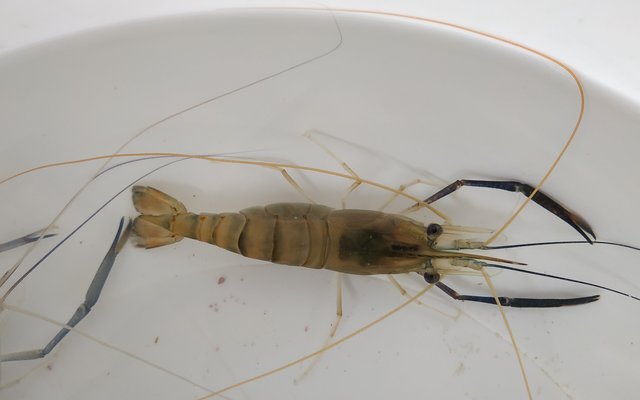Effects of long-term selection for improved growth on traits of commercial interest are generally not well documented in aquaculture species, specifically in giant freshwater prawn Macrobrachium rosenbergii.
A team of Australian and Vietnamese researchers analyzed a total of 106,756 data records collected from a pedigreed giant freshwater prawn population over nine years (2007-2015) to evaluate genetic progress achieved for body weight and examine correlated genetic changes in measurements of body dimensions (carapace length, abdominal length, carapace width and abdominal width), as well as fitness-related traits (early maturity and small blue claw male).
The heritabilities were moderate for body weight and measurements of body dimensions but the estimates for early maturity and small blue claw male were low. The proportion of variance explained by the common full-sib effects was only 5-7% for measurements of body traits (weight and body dimensions). Genetic correlations among body traits were high and positive (0.93-0.97).
These body traits however showed negative (i.e. favorable) genetic correlations with both early maturity and small blue claw male.
The accumulative genetic gain in body weight after eight generations was 56%, averaging 7% per generation. Selection for high growth, however, did not have detrimental effects on measures of body shape and fitness-related traits. In comparison to one of the founder stocks collected from the Mekong river, the selection line had 50% greater body weight under the same testing environment in the latest generation 2015.
“Our findings provide information to refine the current breeding program to simultaneously improve traits of commercial interest in Macrobrachium rosenbergii,” researchers said.
Check out the study here.













